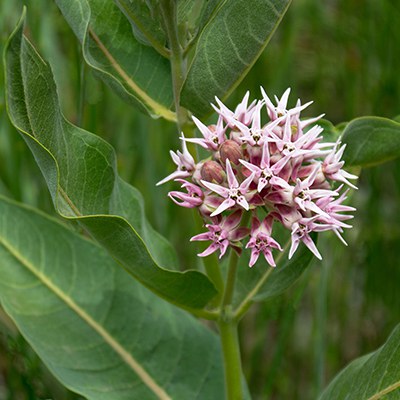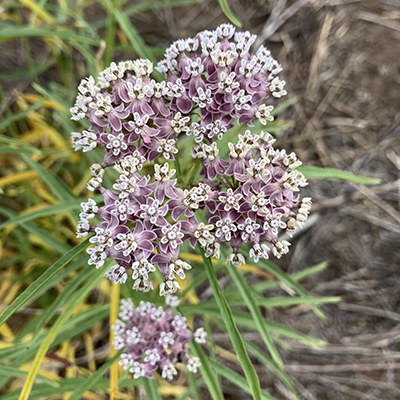
Showy Milkweed (Asclepias speciosa): This milkweed has showy rose-purple flowers in later summer. Leaves are widely oblong with the plant growing 18-36 in. tall. This milkweed likes sun and medium water.

Helpful Hints:
- Most native plants love the sun! It doesn’t have to be full sun, but your plant will be happiest if it has a decent amount of sun (4-8 hours every day, depending on strength of the sun).
- Little plants don’t like competition from other plants when they’re starting out. You’ll want to make sure the soil around your plant start is free of leaves and sticks to help the soil warm up.
- Your milkweed will continue to need regular watering in order to establish their roots. You’ll need to be patient, as native plants can take 2-3 years to get established or to even bloom!
- Once your milkweed becomes established, it could begin spreading underground via its rhizomes. If you’d like to control spread, consider planting in a raised bed.
**Note: Milkweed contains toxins that can be harmful to pets, livestock, and people, if ingested.**
Learn more:
- Visit the Land Trust's monarch and pollinator hub


